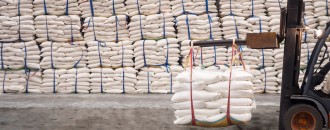
Persisting challenges hurt warehousing sector
Deepak Kumar
Though India’s warehousing industry has undergone a paradigm shift in the last 15 to 20 years, more so with the introduction of e-commerce players in the Indian warehousing industry, there are persisting challenges that the government and the industry can overcome by addressing it together, remarked several industry analysts on Wednesday.
Addressing The India Warehousing Show 2016 in New Delhi on Wednesday, several analysts said the growth of late has been substantial, and the current level of logistical developments when compared to previous years, is evident across the country. The government has also initiated plenty of projects to further develop the country’s infrastructure, which are not upto the mark.
Obstacles, such as non-implementation of Goods and Service Tax (GST), the government’s slow pace of policy reforms and the industry’s laggard response to innovation and acquiring latest technology, have all hindered the sector’s potential growth.
“The inefficiency in India’s warehousing sector; minor matters such as the development of the sector, implementation of GST, infrastructure, and priorities of the government usually take time. But the industry’s internal issues such as technological advancements should be implemented in order to stay competitive in the market,” said Girish Grover, (Member of The Royal Institution of Chartered Surveyors) MRICS.
The speakers underlined that the industry presents a huge viable opportunity for the government. The government, in turn, should take steps, to facilitate the companies as well as the investors, encourage innovation and add value to the current level of industry-government engagements. Such initiatives alone can change the fate of the industry.
Referring to the development of cities the speakers added that the government should focus on developing Tier III cities as Tier I and Tier II have developed well. The government has in the past, promised developmental projects in the Tier III cities, however, the slow pace of implementation in those cities has generated little confidence in the industry.
Summarising the reasons to the challenges that India has when compared to China and other developed countries, Sandeep Chanda, Head (Strategy and Acquisition), EMBASSY Industrial Parks said, “we have drawn parallels with China and other developed countries in many areas, but with the price of land increasing and multinational companies setting up shop in the country, India should raise its standards. It needs to be efficient in the market and bring transparency in the country’s warehousing sector.”





 to success.
to success.